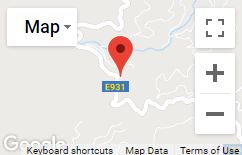Askas is a small village of the Pitsilia region in the Nicosia district. It is located in the north side of the Troodos mountain range, at the foot of mount Papoutsa and at an average altitude of about 900 meters above sea level.
The village lies close to the Nicosia — Limassol administrative borders, having a distance of about 50 kilometres from Nicosia and just two kilometres west of Palaichori, receiving an average annual rainfall of about 800 millimetres; mainly vines of the wine-making variety, vegetables, hazel, walnut, and olive trees, fruit-trees, almond trees, and forage plants are cultivated in its region.
Askas, like all the villages of the area, has gone trough fluctuations of its population. In 1881 its inhabitants numbered 142, increasing to 333 in 1911, and to 439 in 1946. In 1960 the population decreases to 363, and to 321 in 1982. In the 2001 census the village numbered 187 inhabitants.
The village is connected via road to Palaichori in the east and from there on to Nicosia, to Agros in the south-west, and to Alona, Polystypos, and Kyperounta in the west.
Like all the villages, it has its character and peculiarities. However, very intense characteristics appear here that lend to it a unique picturesque quality. With one house adjacent to the other and its narrow, winding alleys buried amidst towering, stone-made walls, it looks like a swallow’s nest stuck on the rock.
The houses, apart from the recent ones, are traditionally built entirely with local materials: the stone, the clay, and the pinewood from the surrounding mountains. The roofs have tiles, all “kneaded” and “baked” locally.
The village’s history is lost in the depths of time. No one knows exactly when the village was built and when it was first inhabited. One specific testimony is a date found on the front of an internal door, in the basement of Theofanis’s house where the earthenware jars were kept. It was covered with a thin layer of clay. However, one day someone leaned on it with his hand and the clay fell off, revealing the date 1381. This indicates that the village was in existence during the Frank Domination era, without that meaning it did not exist before that.
In 1898 a school started operating in the village. In the church’s “Kontikas” codex, which provides plenty of information regarding the last 160 years, the amount of 252 “groshia” (piasters, coins) -for the purposes of “school rights” -is reported for the first time in the church’s expenses for that year. In 1902 a school was built in the village with expenses paid by the church. It is located in the lower neighbourhood, next to the “Stavros” (Cross) church. This school is referred to as the first girl’s school in Cyprus. Today, people call it the “Skolioudi” (the little school).
The village was formerly irrigated through two springs: the “outer” spring in the upper neighbourhood and the lower spring in the lower neighbourhood. Their running water refreshed the people and the livestock, irrigating the crofts at the same time.
Oral tradition mentions that -for some time -Askas comprised of only eleven families. Another says that it once had fourteen goldsmiths and seven priests. This shows that the village, through the passage of time, also had vivacious periods. Up until the beginning of the 20th century, a police station operated in the village. Today the building of the old police station has been maintained and reconditioned by the Antiquities Department. Considerations are being made to convert it into a museum.
There are two churches in the village. One is dedicated to the Holy Baptist (John) and the other of the Holy Cross. There is also the country church of “Agia Christina” that today is called the country church of “Agia Paraskevi”.
The village -under its present name -is not included in the list of Lusignan – Venetian feuds and royal estates of Mas Latri. However, it is most probable that the “Asta” settlement that is found marked in the Venetian maps is Askas.
According to one version, the village’s name is due to its first settler who was a skin-bag maker. Another version reports that it took its name from a mediaeval family of nobles that was surnamed Askas.
The excellent position of the village, its amazing climate, and the wonderful natural environment that surrounds it, are the things that will cause the admiration of the visitor, engraving on his/her memory the uniqueness of this small but picturesque village.








